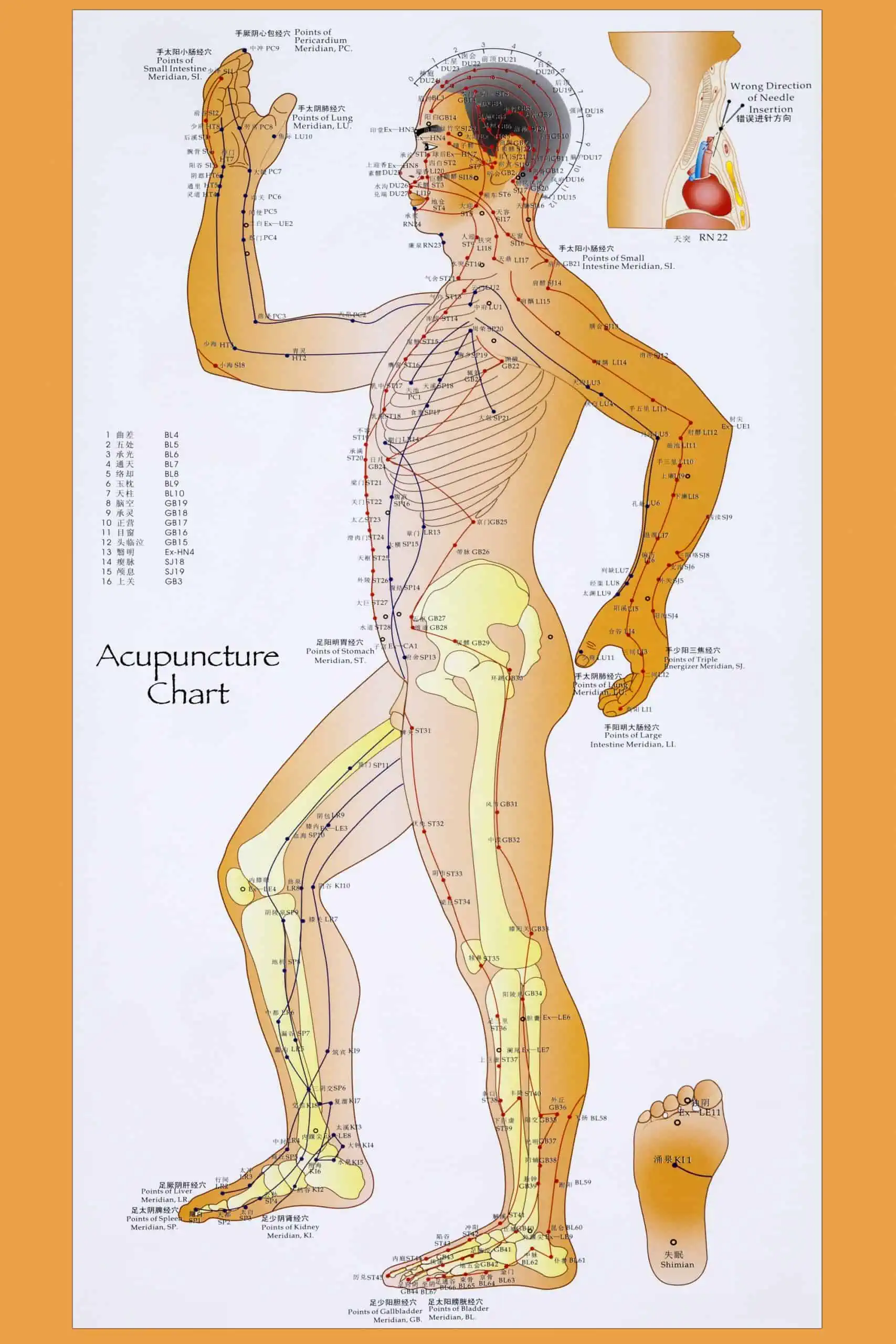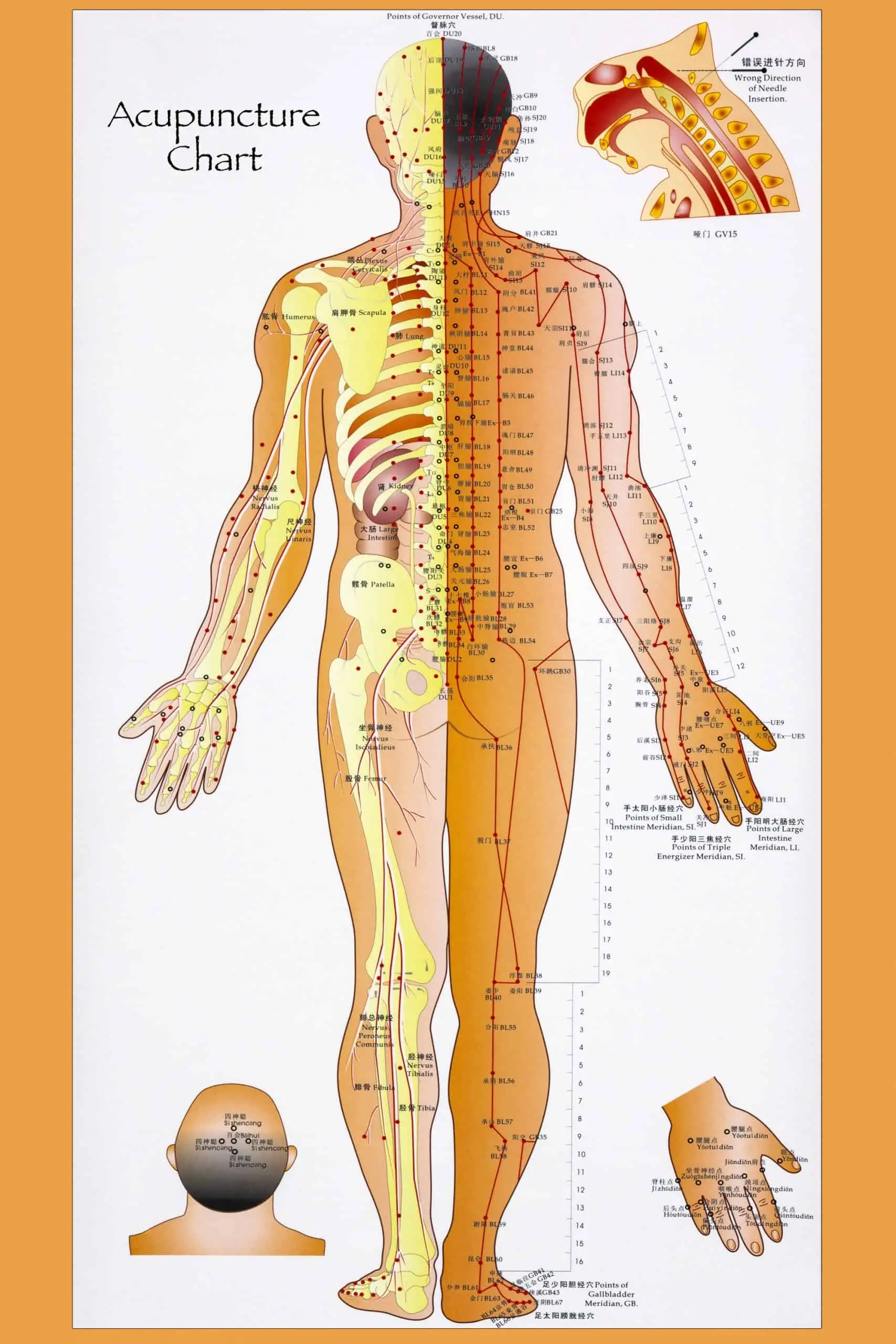What are the acupuncture points used in Chinese Medicine?
In the classical texts of Chinese Medicine the acupuncture points are described as places where the spirit Qi moves, enters and exits, where the Qi and Blood of the channel flow in and out. They are locations where the pathogenic Qi gathers and the Yang Qi enters. They are “not the same as skin, flesh, sinews and bones (Ling Shu Chapter 1)”, meaning that they are found in the space between the material aspects of the body.
Where do I find the acupuncture point locations?
In practice, their location is found in an area or field, which we locate using our anatomical acupuncture points map. Acupuncture points reveal and reflect the constantly shifting stream of life, their location alters with disordered Qi flow in the channels.
To locate acupuncture points when treating we must utilise palpation. The area immediately surrounding the precise ’anatomical location’ is explored to seek out the space where the tissue is different and the body communicates to us.
This process is like trying to find tour way to visit a friend for the first time. You were given the address (the anatomical location) and used Google maps to find your way there. But once you get to that address you have to find the door (palpating the area to find the true location). Once you have found the door you need to figure out how to open it and enter (determining the right technique/pressure/depth at which to engage the acupuncture point). An experienced acupuncturist knows how to find acupuncture point locations, and then how to approach it with an acupuncture needle to have the most significant effect.
Main acupuncture points charts used in an acupuncture treatment



Micro system body acupuncture charts for off meridian points
There are also points to be found in other acupuncture systems such as Tung lineage acupuncture which extend the number of mapped points further. Microsystems such as auricular acupuncture or Korean hand acupuncture add even more mapped acupuncture points again.



Korean hand acupuncture point chart – Original image available at acupunctureproducts.com
Ashi (places with pain on pressure) trigger point charts
Then there are the non-mapped points, the well-known Ashi points. These are essentially the spots where one is sore and tight and is the most rudimentary and fundamental points that can be treated with acupuncture. Sometimes these may correlate with mapped acupuncture points or muscular trigger points, but often don’t, and are generally used to treat pain and dysfunction in the local area. In fact, they do this so well, that the entire practice of dry needling is based upon treating these Ashi points alone (yes dry needling is a branch of the treatment modality known as acupuncture).


How many acupuncture points are there?
There are 346 points that are mapped on the twelve main channels and two extra-ordinary channels (Du and Ren Mai). In addition to this, there are a range of extra non-channel points which follow a naming convention (eg M-HN-3 Yin Tang) – though I am yet to source the definitive and complete list of points within this naming classification system (please let me know if you have found this).
With the standard mapped channel and extra points, we have around 500. When we add in Tung system points and microsystem points from auricular and Korean hand acupuncture we are in the realm of 1000 (there are many points also not mentioned previously such as experiential points from Japanese traditions and microsystems on other areas of the body such as the index finger or feet reflexology). When we consider that any place that is sore or tight can be considered an Ashi acupuncture point, then the number is only limited by the unique realm and terrain of each body!
What effects do acupuncture points have on the human body?
Our bodies are alive, covered in dynamic spaces and places that can be stimulated to create all manner of effects on our health. The use of acupuncture or acupressure on these points can influence circulation in the major meridian channels and influence the function of the internal organs.
It truly is incredible to consider the variety of conditions that can benefit from targeted point selection by a trained acupuncture professional – from pain and restriction of movement to digestive disorders, allergies, sleep disturbances and menstrual irregularities to name but a few. Whether utilising firm or gentle pressure, strong or contact needling techniques, many symptoms benefit from the stimulation of properly located acupuncture points.


